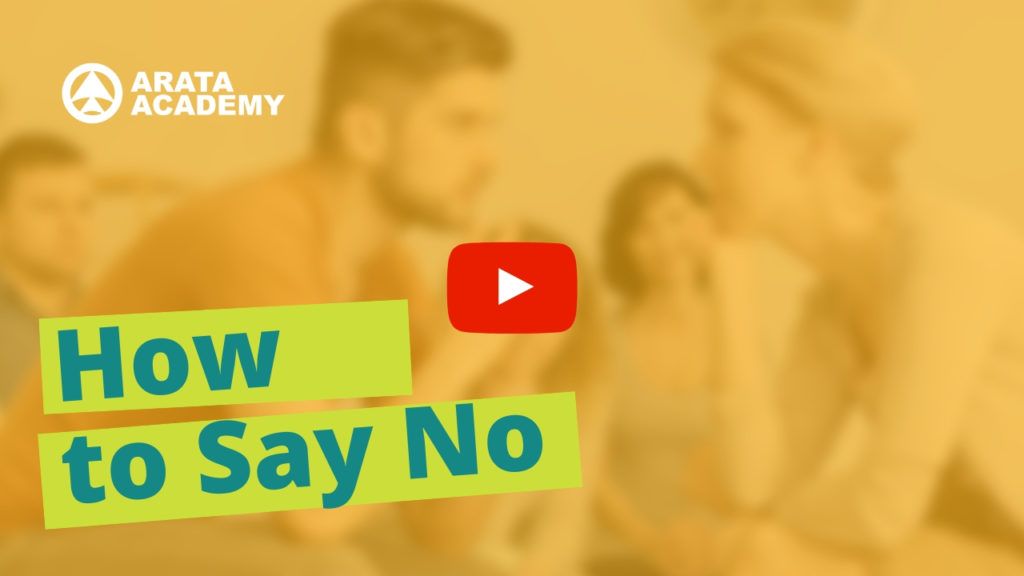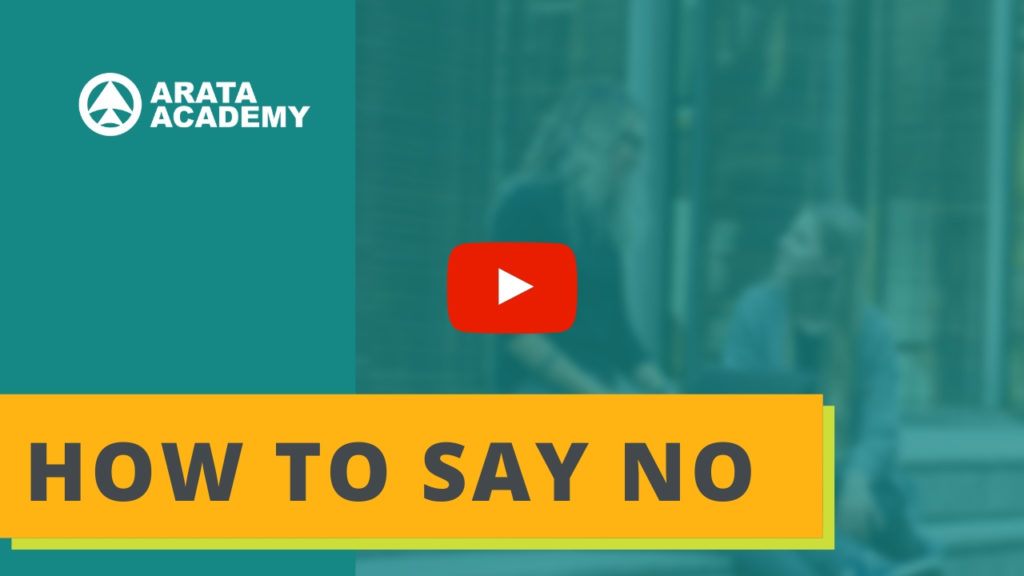Hello! Seiiti Arata. Assertiveness is the ability to express your opinion with confidence and clarity. You know what you want, and you know what you do not want. This is an emotional competence that allows you to set healthy boundaries in your life. Unfortunately, it is not something we learn in school. Many people reach adulthood without knowing how to say no.
People who find it difficult to say no may be using strategies that work sometimes but have some flaws. This video is divided into two parts: first we understand what the errors are, and in the second part we will understand what to do about it.
1. Avoidance and saying no without saying no
This is the first mistake of those who cannot say no. You avoid situations where you might need to say no.
One way to do this is simply to run away from situations in which you know people will ask you for something. You’re always telling people you do not have time for anything. It’s as if you are already giving them prior warning that they should not ask you for anything.
What is the problem with this strategy? You end up isolating yourself from the world, because it is impossible to predict exactly who will ask for something you do not want to do.
This defensive strategy is hinting that you’re overwhelmed. You are driving people away. They begin to feel afraid to approach you. They may feel they are always bothering you.
2. Being evasive and confusing
The second error is to be evasive, saying that you will think about it, and then you disappear. This ends up generating confusion, because the others will not understand your motivations. Maybe you’re disrespecting them by not caring at all? Maybe you simply forgot? Were you angry at them?
In other cases, the inability to say no causes you to enter the automatic mode, and you say yes to everything, including things you do not want to do. And then you secretly wish the other person would forget and never ask you again about your empty promise. This also creates confusion—no one can understand what is going on in your head.
There are times you think cannot say no because you don’t have a good excuse. So you say yes, but you are clearly unenthusiastic. Or you say yes, but you are already so overloaded that you do not deliver with quality, and you disappoint people. And you get the reputation of being an untrustworthy person.
Okay, so these are the two great problems of those who cannot say no. Let us now look at the second part of the video, which discusses what to do about it.
3. Develop your assertiveness.
Be polite and firm. See episode 64 in the series, Hello! Seiiti Arata, at http://arata.se/hello64.
Show people that you respect your own feelings and your opinions. Set limits from the start, expressing what you like and what you dislike. These are some simple and basic ways to communicate with respect.
Do not apologize all the time or explain the reasons why you cannot or do not want to do what someone has asked.
The word “no” is a complete sentence, all by itself. It does not require justification.
You do not have to give explanations. You’re the only person who knows your feelings and motivations and whether what you are doing which is right or not. Do not let other people judge your choices. You are the master of your own time.
With assertiveness you will value yourself and protect your rights and maintain good relationships. To develop assertiveness, visit the link http://arata.se/howtosayno.
4. Practice
Saying no is a skill you can develop.
Make an experiment. Choose a safe situation with low risk, and then say no when someone asks you to do something you do not want to. See what kind of reaction you get. See if the person stops liking you. You will notice that many people will fully accept your no. And that will make it easier for you to say no in the future.
Many people find it difficult to say NO simply for lack of practice. As with everything worthwhile, you will continue to improve with practice. It can often be difficult at first, but it will become increasingly easier the more you do it.
Learning to say no is one of the best things you can do for yourself. It will reduce the number of commitments and the amount of stress in your life. It will release you so you can do what you really want. And better yet, the times you say yes, you’ll have a genuine smile.
Note this: you are the one responsible for creating your own boundaries. Healthy boundaries are part of the online training, How to Say No, and you can have full access at http://arata.se/howtosayno. Here at the youtube series you are receiving information. In the course you will get the strength you need to transform yourself.
Boundaries are created. They do not appear out of nowhere. If you are constantly involved in uncomfortable situations with people who want you to do more than you want to do, it is quite likely that you did not take the responsibility to define your boundaries clearly.
So, visit http://arata.se/howtosayno now to continue this conversation.

